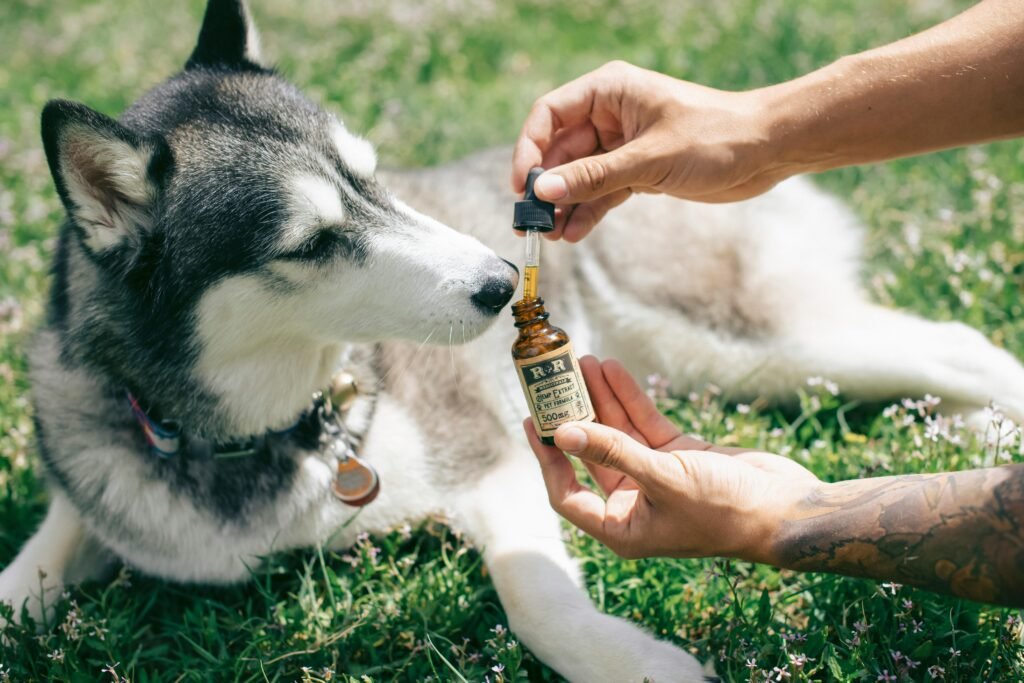
In this article, we’ll share some expert tips to help you about How to Pet a Dog to Sleep, so you can both get some much-needed rest. With a little practice, you’ll be a pro at petting your puppy to sleep in no time.
After a hard day, you are eager to unwind and rest when you get home. But your canine companion has other plans – as soon as you walk through the door, they’re all over you, wanting to play and go for a walk.
While you love their enthusiasm, sometimes you just want them to calm down so you can have a quiet evening. You’ve tried everything, but they still keep you up half the night.
Don’t worry, you’re not alone. Many dog owners struggle to get their pups to settle at bedtime. The good news is, that there are some simple techniques you can use to help your furry friend relax and drift off to sleep.
How to Pet a Dog to Sleep

When it’s time for bed, a comforting routine of gentle petting and soothing words can help lull your dog into a restful slumber. Start by giving your dog some exercise during the day so they are ready to relax at night.
Find a cozy spot
Pick a spot where your dog usually sleeps, like their bed or crate. If they prefer sleeping in your bed, that works too. Having their familiar sleeping area and your calming presence will make it easier for them to drift off.
Soft touches and slow strokes
Use light, gentle touches over the parts of their body they enjoy having petted, like their head, back, chest, or belly. Slow, rhythmic strokes work best. Avoid vigorous petting or scratching, which can overstimulate them. Speak in a soft, relaxed tone to help create a peaceful vibe.
Massage away tension
If your dog seems tense or restless, a massage can help relax their body. Slowly massage their neck, shoulders, and leg muscles using your fingertips to apply firm pressure. Rotate their joints in small circles. The warmth from your hands will relax their muscles.
Stay calm and consistent
Your calm energy and consistency in routine will signal to your dog that it’s time to unwind. Keep the lights dim, avoid screens or loud noises, and continue your gentle petting until they drift off to sleep. Stay with them for a while after they fall asleep—your reassuring presence will comfort them through the night. With practice and patience, a regular bedtime routine of soothing petting and massage can become a habit you both look forward to. Sweet dreams!
Suggested Read: Dog Grooming Tips for Beginners
Preparing Your Dog for a Restful Night

To help your furry friend sleep through the night, it’s important to establish a calming bedtime routine. About an hour before bed, take your dog outside for a final potty break and some exercise to release any pent-up energy. When you head back inside, keep the lights dim and avoid rough play or loud noises that could overstimulate them.
Offer a Small Snack
Give your dog a small treat, like a dental stick, puzzle toy with treats, or frozen Kong. Chewing releases endorphins that have a calming effect and can make them drowsy. Make sure any snacks are given at least an hour before bed so your dog has time to digest and won’t need another potty break in the middle of the night.
Brush and Bathe (If Needed)
A gentle brushing or bath can be part of a relaxing bedtime routine. Brushing releases natural oils that soothe the skin and hair follicles. The warm water of a bath will relax your dog’s muscles. Be sure to towel dry completely since damp fur can be uncomfortable for sleeping.
Provide a Comfortable Space
Make sure your dog has a cozy space for sleeping, away from noise and distractions. Their bed should be in a spot they consider their own little “den”. Provide several layers of bedding, like blankets, pillows, and a mat. The nesting instinct to circle and scratch at bedding before settling in is relaxing for many dogs.
Soft Music or White Noise
Put on some classical music, nature sounds, or a podcast on low volume. Soothing, repetitive ambient noise can help lull your dog to sleep by blocking out unpredictable sounds that might startle them awake. By sticking to a predictable series of quiet, calming activities before bed each night, you’ll help your dog understand that it’s time to unwind and rest. Sweet dreams!
Soothing Bedtime Routines to Help Your Dog Sleep

Establishing a calming pre-bed routine will help relax your dog and cue them that it’s time to sleep. About an hour before bed, start winding down screen time, loud noises, and rough play. Keep the lights dim and avoid stimulation.
A Gentle Massage
Giving your dog a soothing massage is a great way to relax them before bed. Use long, gentle strokes on their neck, back, and legs. Apply light pressure to relax their muscles. Lavender essential oil can help calm anxiety—put a few drops on your hands while massaging. The scent and massage combo is very soothing.
Soft Music
Put on some chill music, nature sounds, or a podcast on low volume. Soft instrumentals, ambient electronica, or lo-fi hip-hop work great. Avoid anything too upbeat. The steady, unobtrusive noise will block out random sounds that might startle your dog at night without stimulating them.
A Final Potty Break
Take your dog out right before bed for a final potty break. This helps ensure they won’t need to go out in the middle of the night, which could disrupt their sleep. While outside, avoid stimulation by not playing or exercising your dog. Go right back inside once they’ve gone to the bathroom.
A Cozy Bed
Make sure your dog has a warm, comfortable bed in a spot they like to sleep. Place the bed in your bedroom or nearby so they feel close to you at night. Have a couple of favorite toys, a bone to chew on, or a puzzle treat toy in their bed to help them wind down for sleep.
Developing a consistent, relaxing routine in the hour leading up to bed will do wonders for your dog’s nighttime restlessness and anxiety. With time and practice, the routine itself will become a cue that triggers your dog’s body and mind for sleep. Sweet dreams!
Petting Techniques to Relax Your Dog Before Bed

To help lull your dog to sleep at night, focus on long, gentle strokes to relax their muscles. Start by gently massaging their ears and neck, areas where dogs tend to hold tension. Use your fingertips to apply firm yet gentle pressure, rubbing in small circles.
Slow, rhythmic petting
Move on too long, slow strokes down your dog’s back, sides, and legs. A slow, rhythmic petting tempo of around 60 to 70 strokes per minute can be very soothing. Keep your touch light and even. This type of petting releases oxytocin, the “love hormone”, in both you and your dog, creating a sense of calm and contentment.
Gentle belly rub
Once your dog is relaxed, try giving them a gentle belly rub. Carefully rub their tummy in wide circles, scratching or massaging the area around their belly button. The belly is a very sensitive area for most dogs, so keep your touch light and watch for any signs of discomfort. Belly rubs can be very soothing for many dogs and help relax them into a drowsy state.
Avoid rough play
As bedtime approaches, avoid any overly exciting play that will hype your dog up. No wrestling, tug-of-war, or loud squeaky toys right before bed. While energetic play is great for exercise and bonding earlier in the day or evening, the hour or so before bed should be a wind-down period.
Keeping your dog’s bedtime routine consistent and using these calming petting techniques can make a big difference in helping them drift off to sleep at night. Sweet dreams! Within a few nights, your dog may start recognizing these gentle petting sessions as their cue to curl up for the night. A well-rested dog leads to a well-rested you, so help your pup achieve peaceful slumber with loving pets and belly rubs.
How to Pet a Dog to Sleep With Medicine

Ask Your Vet for Suggestions
Your vet knows your dog best and can recommend safe medications and proper dosages to help them sleep. Antihistamines like Benadryl can work for some dogs, while others may benefit more from natural remedies like melatonin or chamomile. Never administer medication to your dog without first consulting their veterinarian, and always heed their instructions with great care.
Stick to a Bedtime Routine
A predictable series of quiet activities like giving your dog a massage or brushing them right before bed can be very soothing and help them wind down for sleep. Keep the lights dim, avoid screens or loud noises, and speak in a soft, gentle tone. The familiarity of a nightly routine will signal to your dog that it’s time to sleep.
Gently Pet and Massage Your Dog
Nothing is more relaxing than affectionate touches from their human. Gently pet your dog with long, slow strokes along their back, neck, and ears. Give them a soothing belly rub or massage their paws. Keep your movements unhurried and your grip light and loose. Soft, calming music playing in the background can enhance the relaxing effect.
Be Patient Through the Night
Ensuring a peaceful night’s sleep for your dog involves more than just medication. Some dogs may experience wakefulness due to the effects of the prescribed medicine. To address this, you can utilize the power of your voice and the calming touch of pets to gently guide them back to sleep. Avoiding bright lights is crucial, as they may stimulate your furry friend further. Reassure your dog calmly and quietly until they naturally drift off again.
With the combined benefits of proper medication, a consistent bedtime routine, gentle petting, and a generous dose of patience, you’ll be contributing to your dog’s ability to enjoy long, restful nights of sleep. It’s important to acknowledge that the medication’s effects are expected to last through the night, though an extra dose of patience and affection might be required initially.
Remember, always prioritize your vet’s guidance for the health and safety of your beloved pet. Their expertise ensures that you’re making the best decisions for your furry friend’s well-being. So, whether it’s the soothing power of your voice or the comforting touch of your hand, incorporating these gentle approaches can help pet a dog to sleep naturally.
How to Get a Puppy to Sleep at Night Without Crying

The first few nights with your new puppy can be challenging, as you work to establish a bedtime routine. Having a plan in place will help your puppy learn to settle in for the night without a fuss.
When it’s time for bed, take your puppy out for a final potty break. Keep the lights dim on your way back inside to start signaling that it’s time to unwind. Offer your puppy a stuffed KONG or chew toy filled with peanut butter to keep them occupied in the crate. The treat will help them associate bedtime with a positive experience.
Place the crate in your bedroom where your puppy can see and hear you. Your presence will comfort them. Also, try leaving a blanket or t-shirt that smells like you in the crate. Your familiar scent can be soothing.
Once in the crate, avoid stimulation by not talking, or turning on music or TV. Keep the environment calm and quiet. If your puppy cries, avoid rewarding the behavior by not giving them attention. This teaches them that crying will not get them attention at night.
You can try gently talking, petting, or offering a treat when your puppy is quiet to help them learn to settle down. Be patient through the process. It can take a few nights for a puppy to learn to self-soothe and sleep through the night.
With consistency, your puppy will learn to love their crate and bedtime routine. Reward and praise your puppy in the morning when they’ve slept through the night. Positive reinforcement of good behavior will speed up the training process and build the foundation for a lifetime of peaceful nights.
To summarize, establishing a predictable series of events at bedtime, meeting your puppy’s needs before crating them, providing comfort in the form of your scent or a toy, and avoiding rewarding crying will help your puppy learn to settle in for a restful night’s sleep. With patience and persistence, you’ll both be sleeping soundly in no time.
Conclusion
So, you’re wondering how to pet a dog to sleep? Well, there you have it – the best tips and tricks for petting your pup to sleep. How to pet a dog to sleep involves understanding that every dog is different, but following these guidelines for providing calming pets, belly rubs, and head scratches can help lull your furry friend into dreamland.
Just remember to be patient, gentle, and loving while learning how to pet a dog to sleep. Your dog will let you know what feels best. Pay attention to their cues and master the art of how to pet a dog to sleep. With some practice, you’ll be a pro at petting your puppy to sleep in no time. So, if you want to know how to pet a dog to sleep, follow these steps and wish sweet dreams to you and your four-legged friend!
Suggested Read: Dog Grooming Tips for Beginners


